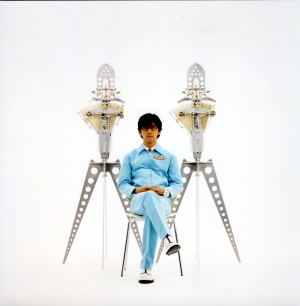
[Device Art is a concept for re-examining art-science-technology relationships both from a contemporary and historical perspective in order to foreground a new aspect of media art. The term "Device Art" may sound obscure, or even self-contradictory, but it is a conscious choice. The concept is a logical extension of a change in the notion of art that already started in the early 20th century with art movements such as Dada and Surrealism. More recently, interactive art has redefined forms of art and the role of artists. What we call device art is a form of media art that integrates art and technology as well as design, entertainment, and popular culture. Instead of regarding technology as a mere tool serving the art, as it is commonly seen, we propose a model in which technology is at the core of artworks. As I will discuss later, the concept took shape on the basis of an analysis of works by contemporary Japanese media artists. Features surfacing in many of these projects include interaction, a positive attitude towards technology, and playfulness. The influence of Japanese cultural tradition can be clearly traced in these haracteristics. Another aspect of this work is the artists' involvement in fields such as design, entertainment, and commercial production, which becomes evident in the approach of internationally recognized artists such as Toshio Iwai, Nobumichi Tosa (Maywa Denki), and Kazuhiko Hachiya. This approach, which is often considered suspect from a Western point of view, is actually a natural part of Japanese art. A long history of visual culture that developed independently from Western paradigms of art plays an important role in the Japanese art scene, offering artists wider possibilities for bringing their concepts outside of the context of museums and galleries.
While theoretical analysis is an important part of the Device Art project, producing artworks according to its concept is the key element. The project launched in the fall of 2004 and has been pursued by nine artists and researchers, with a five-year grant from the Japan Science and Technology Agency, since the fall of 2005. The aim of the project is not only to create "device art" but also to develop a working model for producing, exhibiting, and distributing these works, and theoretically frame them. Making these artworks accessible to a wider audience and users outside of the museums and galleries is part of our agenda. Development of hardware and software modules to support the art practice is also planned.....]
Originally posted by catshive from del.icio.us/catshive, ReBlogged by connor_mike on Aug 28, 2006 at 03:30 PM

